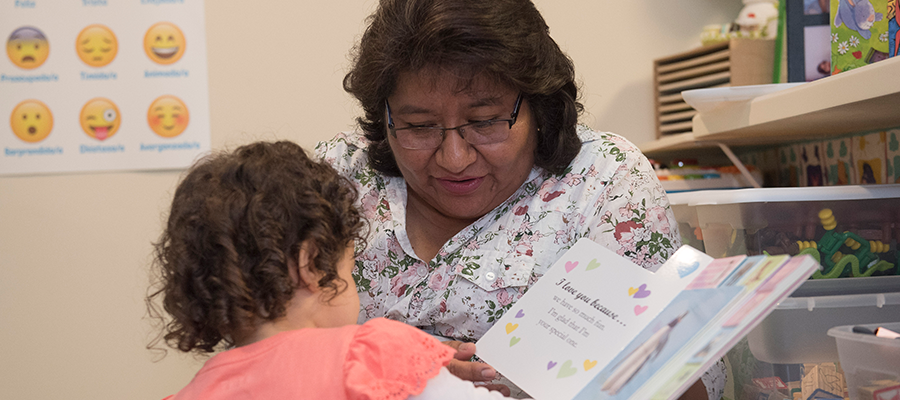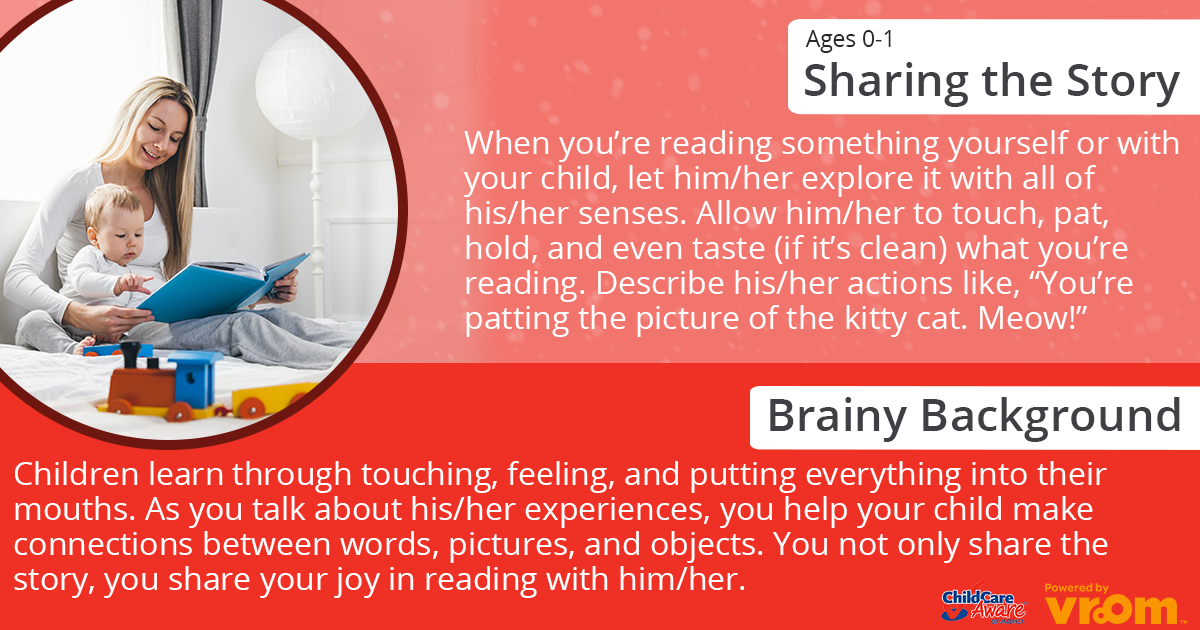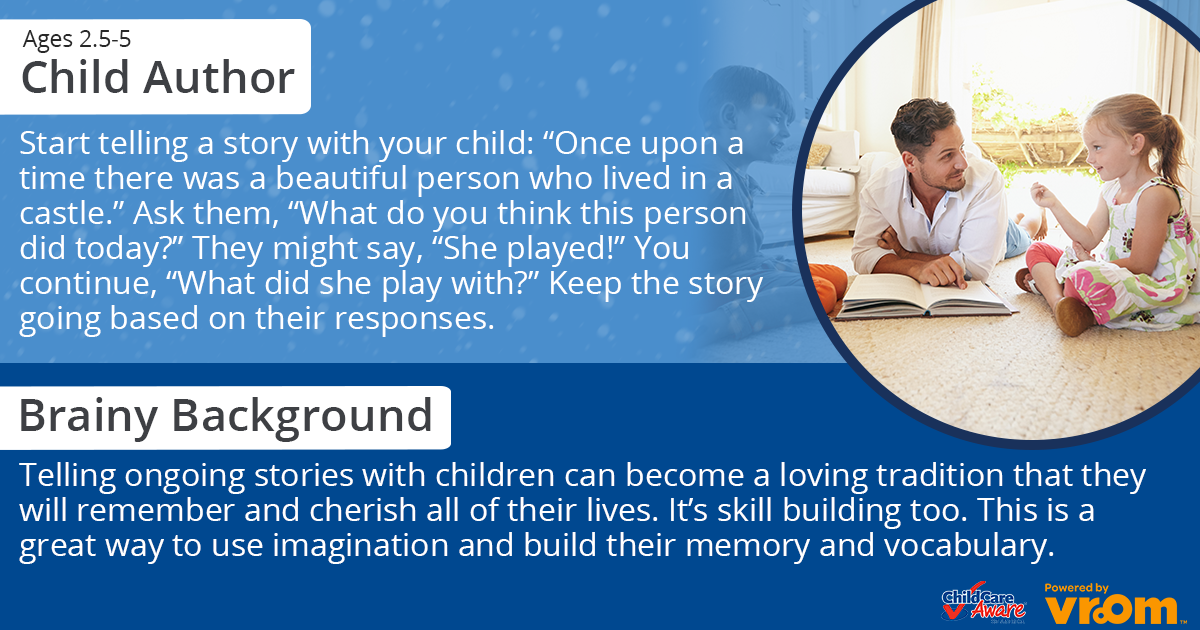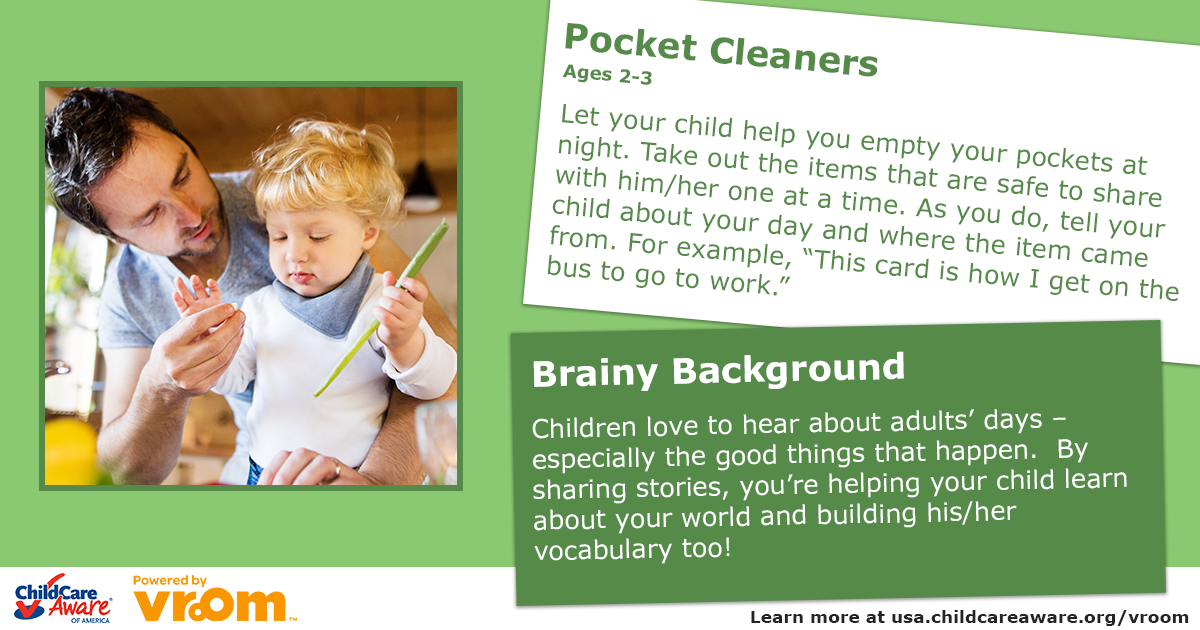

National Tell a Story Day is Monday, April 27th. Help Child Care Aware® of America (CCAoA) encourage families to share the joy and value of telling stories to their children. People have been sharing stories to communicate information and connect with others for thousands of years through visual drawings, word of mouth and written words.
This year, as we celebrate Tell a Story Day during the COVID-19 pandemic, telling stories to children seems to have special relevance because it is a practical and meaningful way for families to bond and learn together in their day-to-day lives. Storytelling can be beneficial in many ways right now. It can:
- provide brain-building opportunities during common, everyday moments for children currently at home with their families,
- unite children with parents who are working on the front lines in response to the pandemic,
- and connect children with loved ones they have not seen in person due to social distancing — grandparents, cousins, friends, neighbors, child care providers and others.
Taking moments to share stories is a great way to connect and build relationships with children while promoting early literacy development and communication skills.
Whether it is reading from a book (fiction or non-fiction), telling a real-life story or making up a story, encourage families to find moments with their children on this special day and every day to tell a story. Below are ideas to engage families and tips and resources to share with families on a variety of ways to promote learning and stay connected with loved ones through storytelling.
Engaging Families around Storytelling:
- Share science-based, Vroom Tips™ that encourage storytelling on your agency’s website, through social media posts, e-newsletters, etc. Here is one example of a brain-building tip to share for Tell a Story Day. Click the image to download and use on Facebook:
Vroom Tip: Child Author (2 ½-5 years)
Start telling a story with your child: “Once upon a time there was a beautiful person who lived in a castle.” Ask them, “What do you think this person did today?” They might say, “She played!” You continue, “What did she play with?” Keep the story going based on their responses.
Brainy Background:
Telling ongoing stories with children can become a loving tradition that they will remember and cherish all of their lives. It’s a skill-building activity, too. This is a great way to have children use their imagination and build their memory and vocabulary.
- Read a story live on social media as part of your outreach to families in your community (e.g., using Facebook Live).
- Share online resources such as Storyline Online, which features celebrities reading popular children’s books. https://www.storylineonline.net/.
- Inform families on how to integrate five Brain Building Basics™ — Look, Chat, Take Turns, Follow, Stretch — to boost learning while sharing stories. (Use the Brain Building Basics handout and Brain Building Basics video.).
Storytelling Tips for Families
- Read one of your child’s favorite books or try a new book.
- Tell a fun story about something from your childhood.
- Tell your children a story about a memorable moment with them or something special about them. Children love to hear stories about when they were “young,” too.
- Allow a loved one from afar to share a story with your child using the video chat feature on a tablet or smart phone. Check out “Five Tips to Make the Most of Video Chats” from zerotothree.org.
- Tell your child a story about what you’re doing during an everyday moment — for example, while gardening, repairing a car, preparing a meal, etc. Try this tip, Pocket Cleaners, to share a story about your day with your child.
Vroom Tip: Pocket Cleaners (2-3 years)
Let your child help you empty your pockets at night. Take out the items that are safe to share with him/her one at a time. As you do, tell your child about your day and where the item came from. For example, “This card is how I get on the bus to go to work.”
Brainy Background
Children love to hear about adults’ days – especially the good things that happen. By sharing stories, you’re helping your child learn about your world and building his/her vocabulary too!
- Encourage your child to create their own story. Ask your child to draw a picture, then say to your child, “Tell me about your picture.” You can even record your child’s voice as they tell their story.
- Publish your child’s story. As your child tells you about a picture that they created (a drawing, a painting, a collage of pictures glued on paper, etc.), write down the words they use to tell a story about their picture.
- Ask a grandparent, deployed parent, aunt, child care provider or other loved one to record a video of them reading a book or telling a story to share with your child. This is a great way for children to grow closer through stories with loved ones that they cannot see in person.
- Gather random toys and items from around your house and put in a bag or basket. Pull one item out of the bag to start telling a story with your child. For example, “Once upon a time there was a tiny teddy bear . . .” Then, take turns with your child to remove another item out of the bag or basket as you add on to your story together.
- Tell a story with puppets. No worries if you do not have actual puppets – use stuffed animals, miniature dolls/superhero figurines and socks as your puppets.

Vroom Tip: Sharing the Story (Ages 0-1)
When you’re reading a book or other story to your child, let your young learner explore it with all senses. Allow your child to touch, pat, hold, and even taste (if it’s clean) what you’re reading. Describe the child’s actions aloud, e.g., “You’re patting the picture of the kitty cat. Meow!”
Brainy Background:
Children learn through touching, feeling and putting things in their mouths. As you talk about your child’s experiences, you help your young reading buddy make connections between words, pictures and objects. You not only share the story, you share your joy in reading together.
{{cta(‘bb852214-4bf1-4e28-9405-47136e154e02′,’justifycenter’)}}




